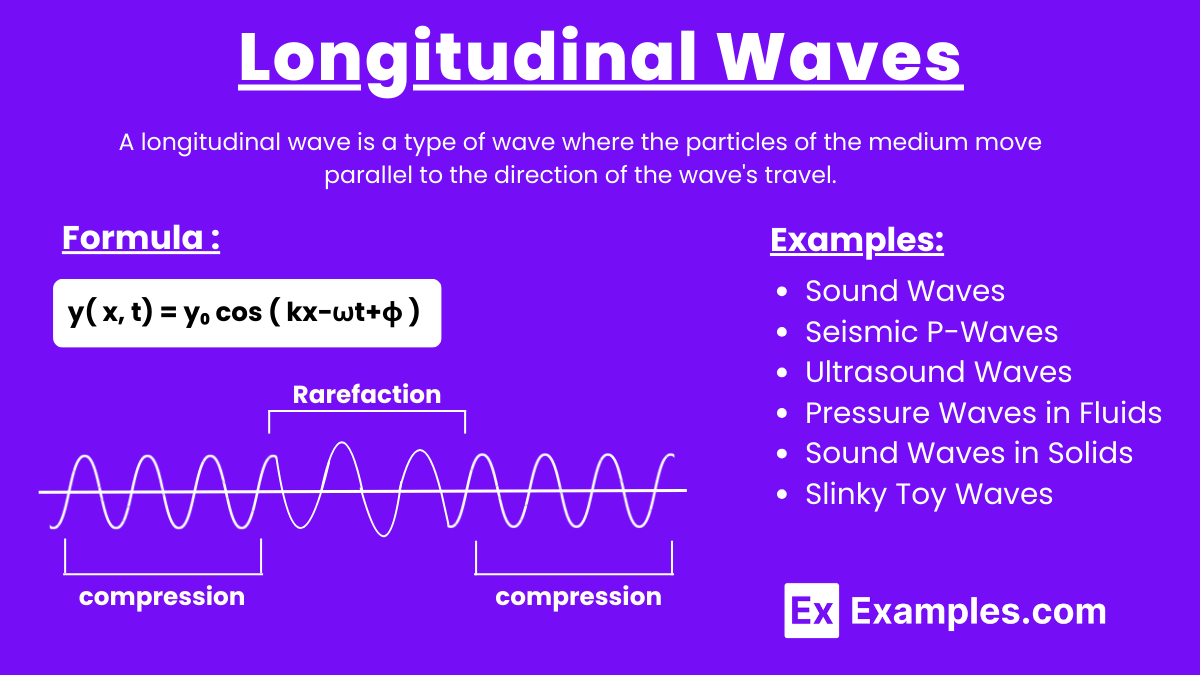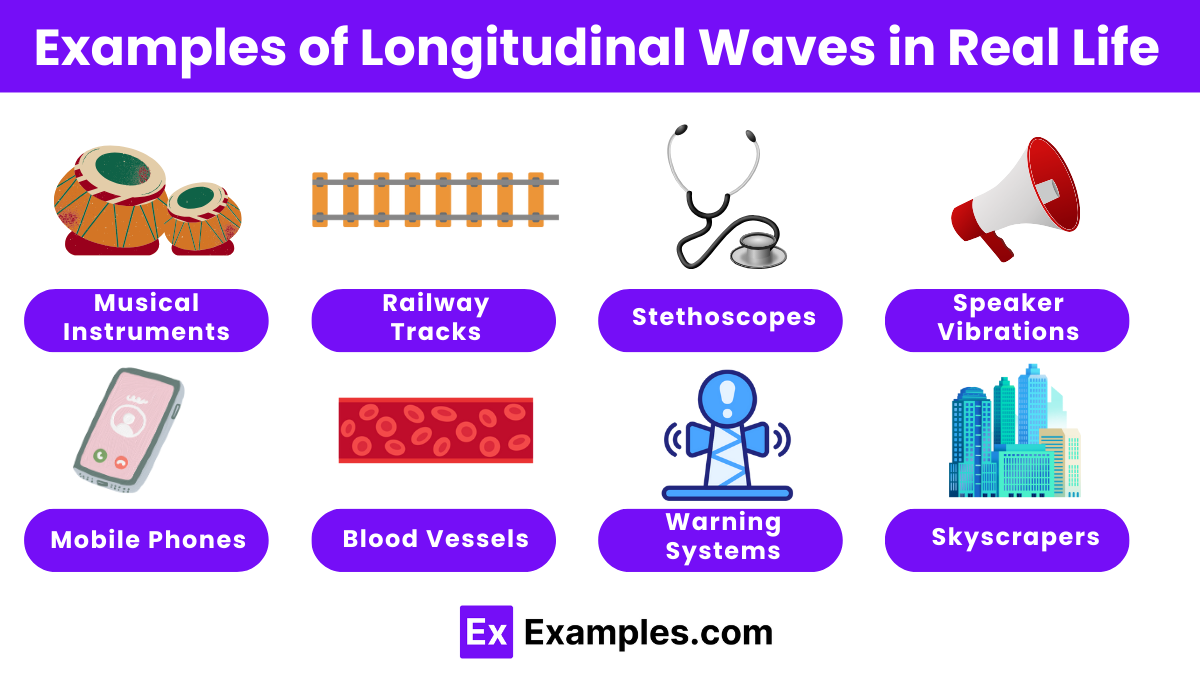What is a key characteristic of longitudinal waves?
Oscillations are perpendicular to the direction of wave travel
Oscillations are parallel to the direction of wave travel
They do not require a medium
They travel at the speed of light


Longitudinal waves are a type of mechanical wave in which the displacement of the medium is parallel to the direction of the wave’s propagation. These waves consist of alternating compressions and rarefactions, where particles of the medium move back and forth in the same direction as the wave travels. Common examples of longitudinal waves include sound waves in air, where the vibrations of air molecules create regions of higher and lower pressure that move through the medium. This type of wave is essential in various fields, including acoustics, seismology, and communication technologies.
A longitudinal wave is a type of wave where the particles of the medium move parallel to the direction of the wave’s travel. Examples include sound waves in air and seismic P-waves. These waves create regions of compression and rarefaction as they propagate through a medium.
The fundamental formula for a longitudinal wave is given by:
where:

| Characteristic | Longitudinal Waves | Transverse Waves |
|---|---|---|
| Particle Motion | Parallel to wave direction | Perpendicular to wave direction |
| Wave Propagation | Compressions and rarefactions | Crests and troughs |
| Medium Requirement | Requires a medium (solid, liquid, or gas) | Can travel through a medium or a vacuum |
| Examples | Sound waves, seismic P-waves, ultrasound | Light waves, water waves, electromagnetic waves |
| Wave Features | Compressions (high pressure) and rarefactions (low pressure) | Crests (high points) and troughs (low points) |
| Polarization | Cannot be polarized | Can be polarized |
| Energy Transmission | Energy travels in the same direction as the wave | Energy travels perpendicular to the wave direction |
| Equation of Motion | y( x, t) = y₀ cos ( kx−ωt+ϕ ) | y( x, t) = y₀ sin ( kx−ωt+ϕ ) |
| Wavelength | Distance between successive compressions or rarefactions | Distance between successive crests or troughs |
| Practical Applications | Medical ultrasound, acoustic communication | Polarized sunglasses, radio waves, X-rays |
In longitudinal waves, particles move parallel to wave direction. In transverse waves, particles move perpendicular to wave direction.
Compressions are regions where particles are closest together, resulting from the wave’s compressive force.
Rarefactions are regions where particles are spread apart, resulting from the wave’s expansive force.
Longitudinal waves are produced by vibrating objects that create compressions and rarefactions in the medium.
No, longitudinal waves require a medium (solid, liquid, or gas) to propagate, unlike electromagnetic waves.
The wavelength is the distance between two consecutive compressions or rarefactions in the wave.
Frequency is the number of compressions or rarefactions that pass a point per second, measured in Hertz (Hz).
Amplitude is the maximum displacement of particles from their equilibrium position, indicating the wave’s energy.
Longitudinal wave speed depends on the medium’s density and elasticity, traveling fastest in solids, slower in liquids, and slowest in gases.
An example of a liquid is water. It flows and takes the shape of its container.
Text prompt
Add Tone
10 Examples of Public speaking
20 Examples of Gas lighting
What is a key characteristic of longitudinal waves?
Oscillations are perpendicular to the direction of wave travel
Oscillations are parallel to the direction of wave travel
They do not require a medium
They travel at the speed of light
Which of the following is an example of a longitudinal wave?
Light wave
Sound wave
Electromagnetic wave
Water wave
In a longitudinal wave, what are the regions where particles are closest together called?
Troughs
Nodes
Compressons
Antinodes
What are the regions in a longitudinal wave where particles are spread apart called?
Rarefactions
Antinodes
Crests
Troughs
How does the speed of a longitudinal wave change in a denser medium?
Speed increases
Speed decreases
Speed remains the same
Speed becomes zero
Which type of wave is best described by a series of compressions and rarefactions?
Transverse wave
Surface wave
Longitudinal wave
Electromagnetic wave
What is the term for the distance between two consecutive compressions in a longitudinal wave?
Frequency
Amplitude
Wavelength
Speed
If the frequency of a longitudinal wave increases while the medium remains constant, what happens to the wavelength?
Wavelength increases
Wavelength decreases
Wavelength remains unchanged
Wavelength becomes zero
In which of the following media does a longitudinal wave propagate the fastest?
Air
Water
Steel
Vacuum
What happens to the sound of a longitudinal wave if it travels from a warmer to a cooler medium?
Sound becomes louder
Sound becomes softer
Speed decreases
Speed increases
Before you leave, take our quick quiz to enhance your learning!

